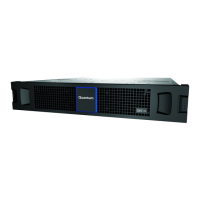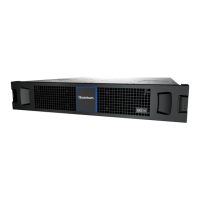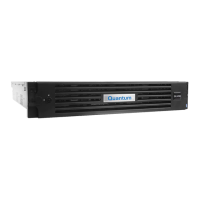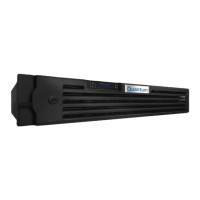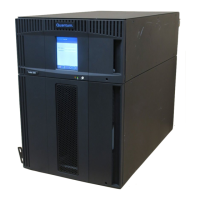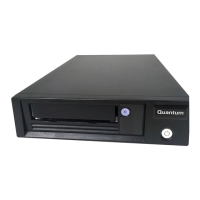Chapter 5: Troubleshooting
Isolate a Host-side SAS Connection Fault
QX and QXS Setup Guide 140
l No – Proceed to the next step.
9. Verify that the switch, if any, is operating properly. If possible, test with another port.
10.Verify that the HBA is fully seated, and that the PCI slot is powered on and operational.
11.Replace the HBA with a known good HBA, or move the host side cable and SFP to a known good HBA.
Is the host link status LED on?
l Yes – You have isolated the fault to the HBA. Replace the HBA.
l No – It is likely that the controller module needs to be replaced.
12.Move the cable and SFP back to its original port.
Is the host link status LED on?
l No – The controller module’s port has failed. Replace the controller module.
l Yes – Monitor the connection for a period of time. It may be an intermittent problem, which can occur
with SFPs, damaged cables, and HBAs.
Isolate a Host-side SAS Connection Fault
This procedure applies to following systems that use SAS host ports:
l QXS-312 and QXS-324
l QXS-412, QXS-324, QXS-448, and QXS-456
l QXS-648 and QXS-656
This procedure requires scheduled downtime.
Host-side Connection Troubleshooting Featuring SAS
Host Ports
The procedure below applies to RAID chassis employing 12 Gb SFF-8644 connectors in the HD mini-SAS
host ports used for I/O. These models do not support replication.
1. Halt all I/O to the storage system (see Stopping I/O on page 132).
2. Check the host activity LED.
If there is activity, halt all applications that access the storage system.
3. Check the Cache Status LED to verify that the controller’s cached data is flushed to the drives.
l Solid – Cache is dirty (contains unwritten data) and is not writing to drive.
l Blinking – Cache data is being written to CompactFlash.
